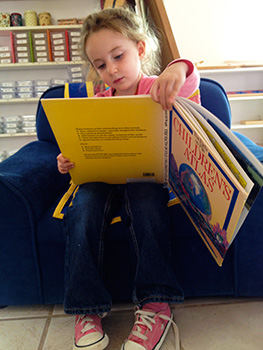Comparing Montessori to Traditional Education
Some Comparisons Of Montessori Education With Traditional Education
 Montessori children are unusually adaptable. They have learned to work independently and in groups. Since they’ve been encouraged to make decisions from an early age, these children are problem-solvers who can make appropriate choices and manage their time well.
Montessori children are unusually adaptable. They have learned to work independently and in groups. Since they’ve been encouraged to make decisions from an early age, these children are problem-solvers who can make appropriate choices and manage their time well.
They have been encouraged to exchange ideas and discuss their work freely with others. Their good communication skills ease the way in new settings.
Research has shown that the best predictor of future success is a positive sense of self-esteem. Montessori programs, based on self-directed non-competitive activities, help children develop strong self-images and the confidence to face challenges and change with optimism.
Montessori
Emphasis on cognitive structures and social development.
- Teacher has unobtrusive role in classroom activity; child is an active participant in learning
- Environment and method encourage internal self-discipline
- Instruction, both individual and group, adapts to each student’s learning style.
- Mixed age grouping
- Children are encouraged to teach, collaborate, and help each other
- Child chooses own work from interests and abilities
- Child formulates own concepts from self-teaching material
- Child works as long as s/he wishes on chosen project
- Child sets own learning pace to internalize information
- Child spots own errors through feedback from the material
- Learning is reinforced internally through the child’s own repetition of an activity and internal feelings of success
- Multi-sensory materials for physical exploration
- Organized program for learning care of self and environment
- Child can work where s/he is comfortable, moves around and talks at will (yet disturbs not the work of others); group work is voluntary and negotiable
Traditional
Emphasis on rote knowledge and social development.
- Teacher has dominant, active role in classroom activity; child is a passive participant in learning
- Teacher acts as primary enforcer of external discipline
- Instruction, both individual and group, conforms to the adult’s teaching style
- Same age grouping
- Most teaching is done by teacher and collaboration is discouraged
- Curriculum structured for child with little regard for child’s interests
- Child is guided to concepts by teacher
- Child generally given specific time limit for work
- Instruction pace usually set by group norm or teacher
- If work is corrected, errors usually pointed out by teacher
- Learning is reinforced externally by rote repetition and rewards/discouragements
- Fewer materials for sensory development and concrete manipulation
- Less emphasis on self-care instruction and classroom maintenance
- Child usually assigned own chair; encouraged to sit still and listen during group sessions
American Montessori Society
150 Fifth Avenue, Suite 203 New York, N.Y. 10011-4384 212 924-3209 FAX 212 727-2254